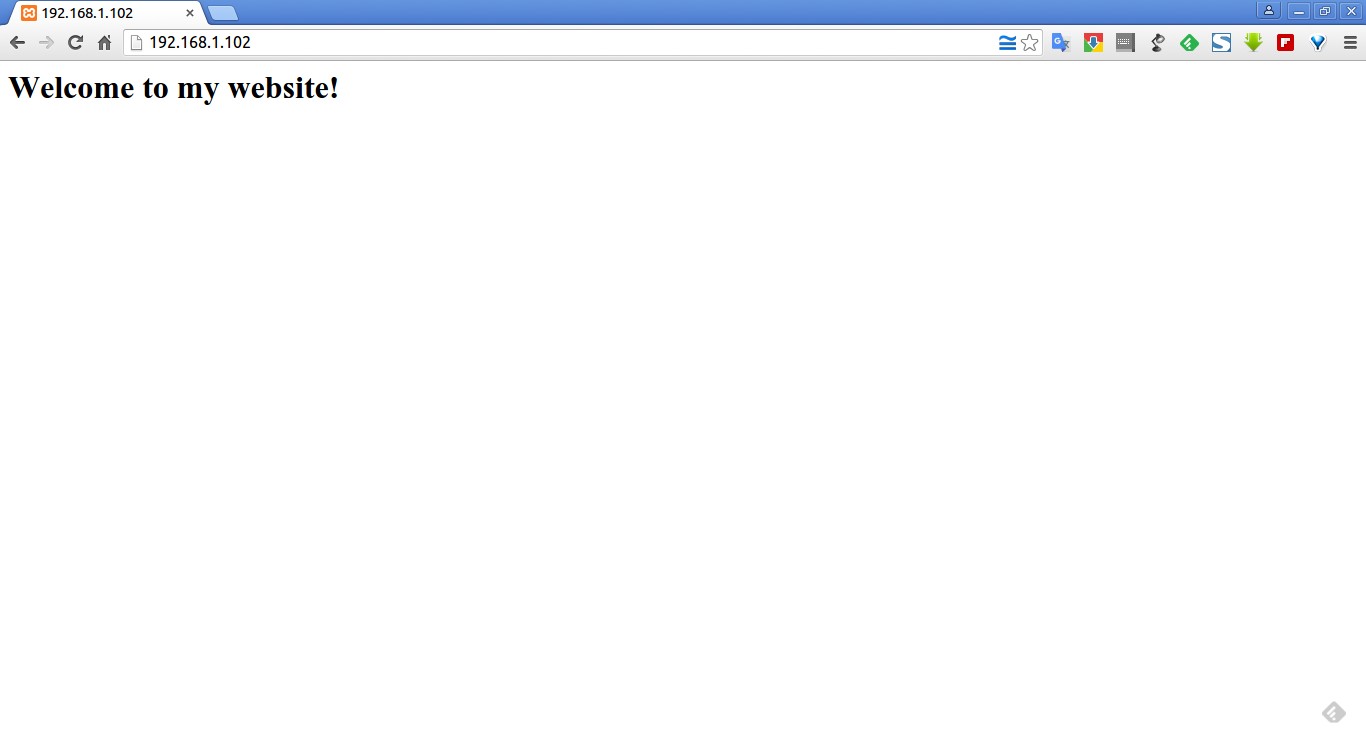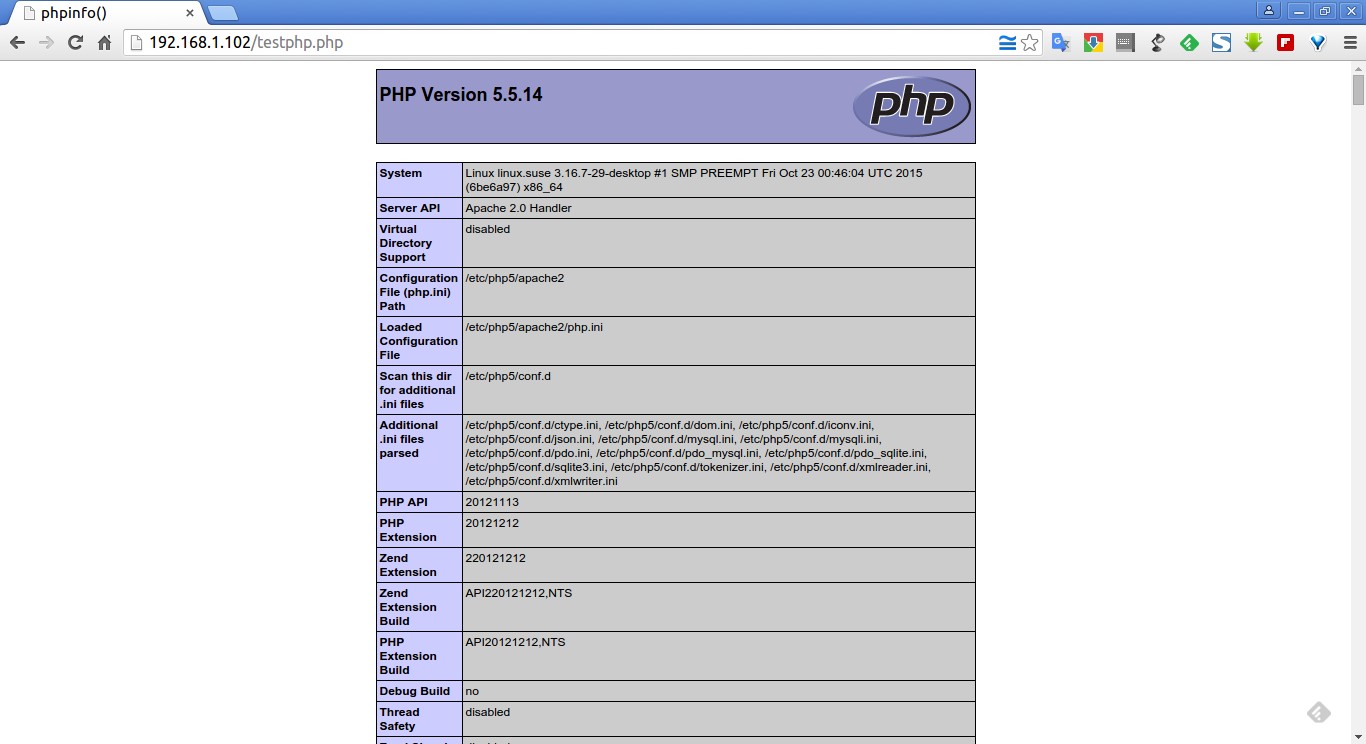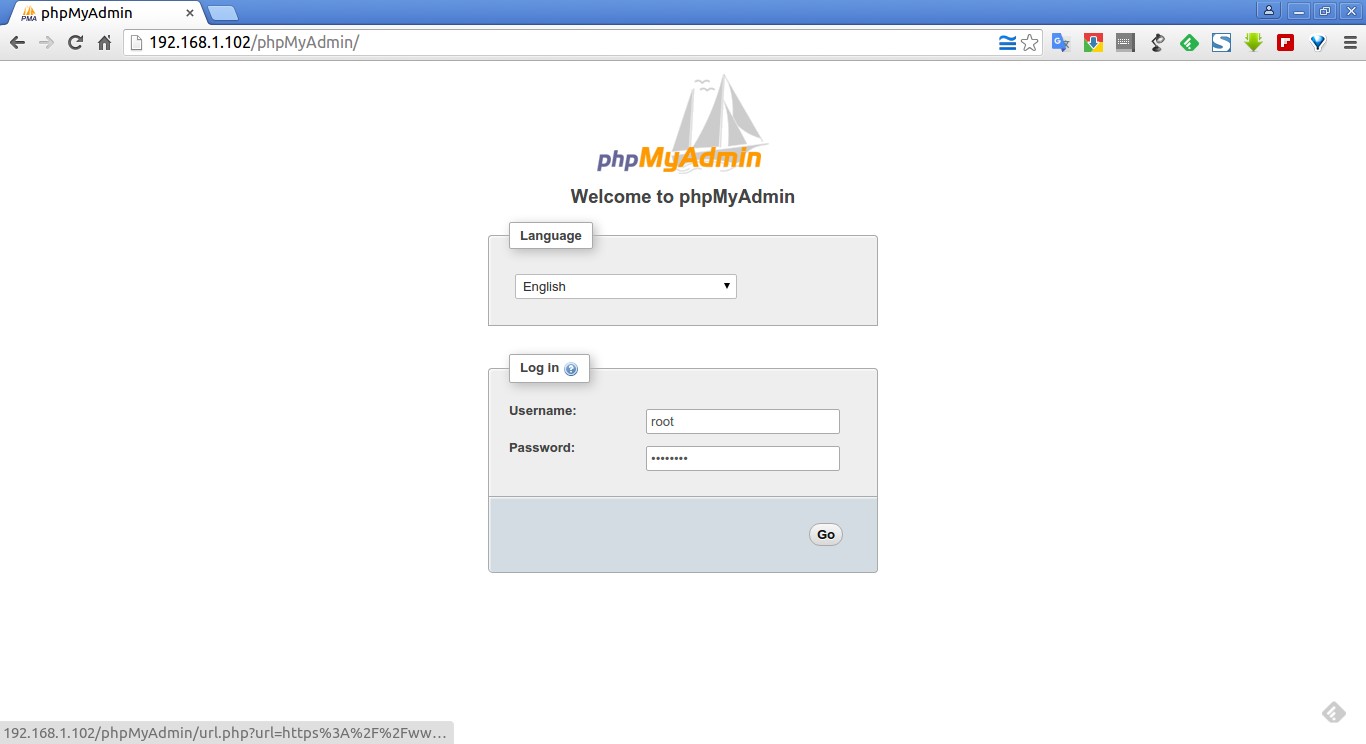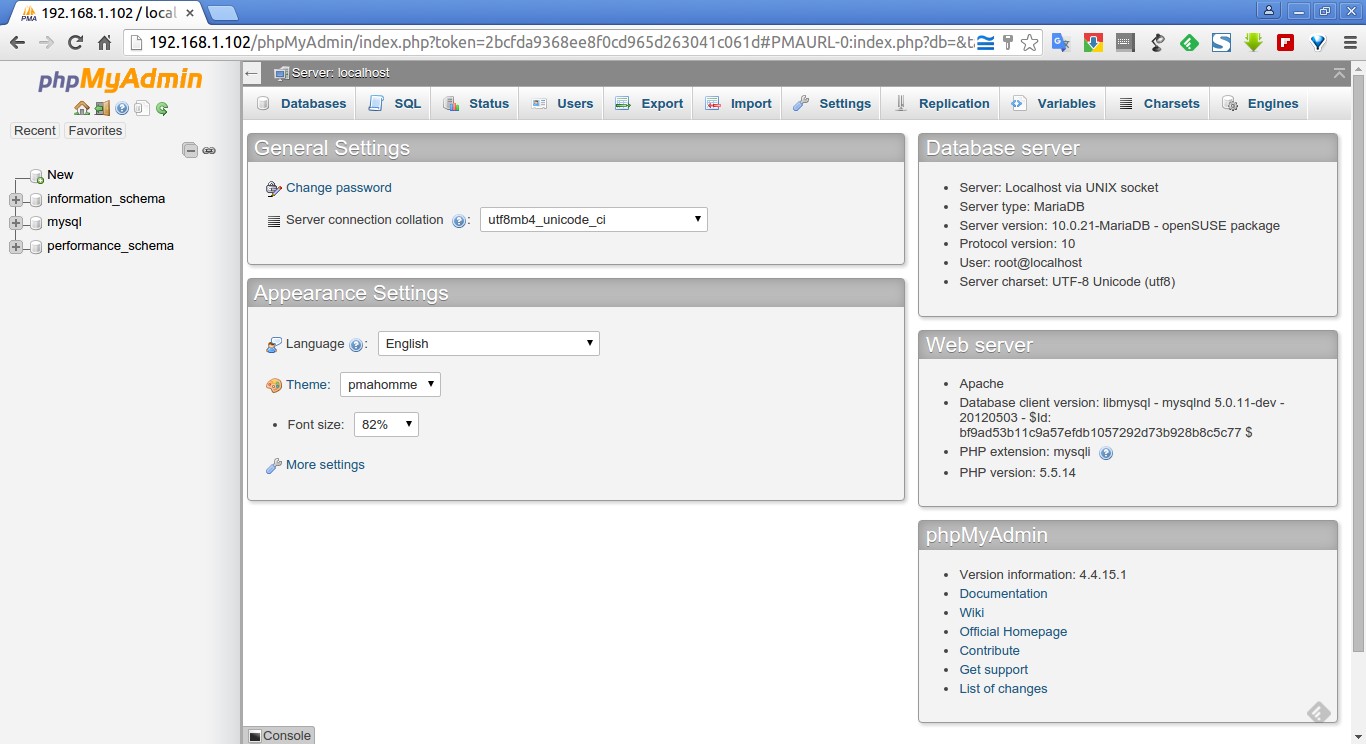LAMP is a combination of operating system and open-source software stack. The acronym LAMP comes from the first letters of Linux, Apache HTTP Server, MariaDB/MySQL database, and PHP or Perl or Python.
In this tutorial, I will show you how to install LAMP stack on openSUSE 42.1.
Install Apache
Apache is an open-source multi-platform web server. It provides a full range of web server features including CGI, SSL and virtual domains.
To install Apache, enter the following command from your terminal:
sudo zypper in apache2
Start the Apache service and let it to start automatically on every reboot:
sudo systemctl start apache2
sudo systemctl enable apache2
By default webserver is accessible from localhost. If you want to access it from a remote machine, you should allow Apache server default port 80 through your firewall/router.
sudo nano /etc/sysconfig/SuSEfirewall2
Add the following line in it.
[...] FW_CONFIGURATIONS_EXT="apache2" [...]
Restart firewall:
sudo systemctl restart SuSEfirewall2
Alternatively, you can do it, using YaST control center. Check the following, if you wish to know how.
Test Apache
Create a new index.html file under default document root folder /srv/www/htdocs/. Because, In openSUSE, there is no index.html by default.
sudo nano /srv/www/htdocs/index.html
Add the following line.
<html><body><h1>Welcome to my website!</h1></body></html>
Open your web browser and navigate to http://localhost/ or http://server-ip-address/.
If you see a screen like above, you’re done. Apache server is working.
Install MariaDB
MariaDB is a drop in replacement for MySQL. It is a robust, scalable and reliable SQL server that comes rich set of enhancements.
Now start installing MariaDB using command:
sudo zypper in mariadb
Start MariaDB service and let it to start automatically on every reboot:
sudo systemctl start mysql
sudo systemctl enable mysql
Set MySQL root password
By default MySWL root password is empty. So, to prevent unauthorized access to MySQL, let us set root user password:
mysql_secure_installation
Sample output:
NOTE: RUNNING ALL PARTS OF THIS SCRIPT IS RECOMMENDED FOR ALL MariaDB SERVERS IN PRODUCTION USE! PLEASE READ EACH STEP CAREFULLY! In order to log into MariaDB to secure it, we'll need the current password for the root user. If you've just installed MariaDB, and you haven't set the root password yet, the password will be blank, so you should just press enter here. Enter current password for root (enter for none): OK, successfully used password, moving on... Setting the root password ensures that nobody can log into the MariaDB root user without the proper authorisation. Set root password? [Y/n] y New password: Re-enter new password: Password updated successfully! Reloading privilege tables.. ... Success! By default, a MariaDB installation has an anonymous user, allowing anyone to log into MariaDB without having to have a user account created for them. This is intended only for testing, and to make the installation go a bit smoother. You should remove them before moving into a production environment. Remove anonymous users? [Y/n] ... Success! Normally, root should only be allowed to connect from 'localhost'. This ensures that someone cannot guess at the root password from the network. Disallow root login remotely? [Y/n] ... Success! By default, MariaDB comes with a database named 'test' that anyone can access. This is also intended only for testing, and should be removed before moving into a production environment. Remove test database and access to it? [Y/n] - Dropping test database... ... Success! - Removing privileges on test database... ... Success! Reloading the privilege tables will ensure that all changes made so far will take effect immediately. Reload privilege tables now? [Y/n] ... Success! Cleaning up... All done! If you've completed all of the above steps, your MariaDB installation should now be secure. Thanks for using MariaDB!
Install PHP
PHP (recursive acronym for PHP: Hypertext Preprocessor) is a widely used open-source general purpose scripting language that is especially suited for web development and can be embedded into HTML.
Install PHP with following command:
sudo zypper in php5 php5-mysql apache2-mod_php5
Enable mod-php by executing the following command from the Terminal:
sudo a2enmod php5
Test PHP
Create a sample “testphp.php” file in Apache document root folder and append the lines as shown below:
sudo nano /srv/www/htdocs/testphp.php
Add the following line in it.
<?php phpinfo(); ?>
Restart apache2 service:
sudo systemctl restart apache2
Open up your browser, and navigate to http://server-ip-address/testphp.php. It will display all the details about php such as version, build date and commands etc.
If you want to install all php modules, enter the command sudo zypper in php* and restart the httpd service. To verify for the modules, open web browser and navigate to http://server-ip-address/testphp.php. You will see all php modules.
The following tips are recommended by one of Unixmen reader Mr.Edgard.
There are two important things to remember when installing LAMP in OpenSUSE 42.1/13.2/13.1, these two things can cause issues with PHP if you forget about them.
1. First of all, in OpenSUSE 42.1/13.2/13.1 display_errors is set to Off by default. If you are developing, it is important to turn it On at/etc/php5/apache2/php.ini.
sudo nano /etc/php5/apache2/php.ini
Find the line:
display_errors = Off
And, change to:
display_errors = On
Save and exit.
2. The second detail is to alter the permissions of /srv/www/htdocs (# chmod 777 /srv/www/htdocs). As a result, PHP was not executing, returning a blank page with no source code, since in OpenSUSE this folder has no public access by default.
Thanks Mr.Edgard. Much appreciated.
Install phpMyAdmin (Optional)
phpMyAdmin is a free open-source web interface tool used to manage your MySQL databases.phpMyAdmin is available in the openSUSE default repositories. So let us install it using command:
sudo zypper in phpmyadmin
Then Edit php.ini file:
sudo nano /etc/php5/apache2/php.ini
Find the following line and uncomment it.
extension=php_mbstring.dll
Restart apache2 service:
sudo systemctl restart apache2
Now navigate to http://localhost/phpMyAdmin or http://ip-address/phpMyAdmin and enter the mysql root username and root password.
That’s it. Now you can manage Mariadb graphically using phpmyadmin.
Note: If you can’t access phpmyadmin from your browser, just create a alias as shown below.
Edit phpMyAdmin.conf file,
sudo nano /etc/apache2/conf.d/phpMyAdmin.conf
Add the line shown in red colour at the beginning.
Alias /phpMyAdmin /srv/www/htdocs/phpMyAdmin <Directory /srv/www/htdocs/phpMyAdmin> Options FollowSymLinks AllowOverride None <IfModule mod_php5.c> php_admin_flag register_globals off php_admin_flag magic_quotes_gpc off php_admin_flag allow_url_include off php_admin_flag allow_url_fopen off php_admin_flag zend.ze1_compatibility_mode off php_admin_flag safe_mode Off php_admin_value open_basedir "/srv/www/htdocs/phpMyAdmin:/var/lib/php5:/tmp$ # customize suhosin php_admin_value suhosin.post.max_array_index_length 256 php_admin_value suhosin.post.max_totalname_length 8192 [...]
Now reboot apache service.
sudo systemctl restart apache2
You can access phpMyAdmin now without any issues.
At this stage, you have a working LAMP server.
Good Luck!









